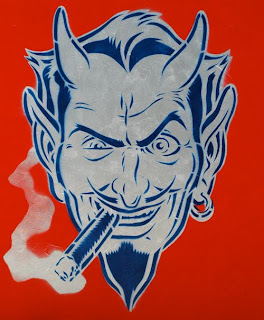Rajeev Srinivasan in his article "The Consequences of Inaction" (http://www.rediff.com/news/2007/may/23raveev.htm, May 23 2007) stated,
"Now make it a little more challenging. What if you knew that the police would shoot your friend without the benefit of the doubt, and if you were only 75 per cent sure about his plans? For instance, if you had an inkling about the terrorist attacks on the Israeli Olympic team in Munich in 1972, would you have notified the police? Or in the case of Seung-Hui Cho at Virginia Tech?"
Should the citizen operate on the principle "the greater good of the greatest number of people? Don't most people, in fact, generally support the incarceration (and even liquidation) of would-be murderers even if the evidence is not compelling; for, the alternative is so much worse. In other words, people compare the human rights of the potential victim to the rights of the potential murderer.
Thus, it should be axiomatic: The rights of the perpetrator of death and the terrorist are not greater than those of their victims. Even though many liberals are concerned about the rights of the criminal, surely those committing crimes against defenseless civilians do not deserve tenderness. Even pre-emptive action is not in opposition to the threats to liberal democracies. Realistically, prevention of crime is one of a person's foremost duties.
Likewise, the duty of every law-abiding citizen is to take needed action for the common good. Failure to aid others is unthinkable.
Civil Action
A significant proportion of those faced with civil justice problems do nothing to resolve them, most commonly because they feel nothing can be done (Pleasence, P., Buck, A., Balmer, N., O’Grady, A., Genn, H., and Smith, M.; 2004; Causes of Action: Civil Law and Social Justice). Commonly those failing to act also regret their inaction and suggest they wish they had done something, though they are often unable to be more specific about possible courses of action.
Partners In Action
In this post, I would like to tell you a little about a group called Partners in Action. A remarkable group of people have significantly improved their own community and the world community through simple action. Here is a brief history of the group.
In 1985, Partners in Action was founded by Curtis M. Cluff in south Phoenix, one of the worst crime areas in Arizona. Illegal drugs and violent crime were rampant there during that era. The danger was so severe that paramedics and the fire department wouldn't even answer a 911 emergency call without a police escort. But, Mr. Cluff saw a need, accessed his options, and met the need. (Partners in Action, http://www.partnersinaction.org/pages/about-history.php, 2006)
One of the the first steps Partners in Action took was to purchase an area - the "Keys Market" - and, with the partnership of several other agencies, convert the market into a community center to provide services to the surrounding neighborhood. Through teams of volunteers, they renovated some of the homes in the vicinity by adding bathrooms; repairing walls, doors, and windows; and fixing leaky roofs.
Since this first project for the needy in Phoenix, Arizona, their scope of service has grown significantly in the past twenty years. They have since developed community outreach programs, a thrift store, a soup kitchen, youth camps, and over 5,000 units of affordable housing throughout the United States.
Today, the group partners with others to build, manage, oversee, and support orphanages, schools, and villages in hurting parts of the world. They are earnestly working with and helping to support orphanages/schools in 20 nations. What wonderful outcomes from humble beginnings.
Inaction
Inaction leads to serious harms in the world just as assuredly as does intentional, active wrongdoing. Collective inaction of members of a group make the members of the group partially responsible for harm the group could have prevented.
True, the law of unintended consequences holds that "whether or not what you do has the effect you intend, it will have consequences that you don't expect and therefore consequences that you don't intend." Some unintended consequences can be very unpleasant.
In other words, inevitably, some unexpected things do occur when people put plans into action. For example, the military has to deal with the terrible consequences of friendly fire in battle. And, the CIA often has "blowback" - unintended, undesirable consequences of covert operations. Even the stiffening of penalties for driving while intoxicated in the United States in the 1980s led, at first, to an increase in hit and run accidents, until legislators later stiffened penalties for leaving the scene of an accident.
But, the fact remains, deliberate inaction to curb civil justice problems does nothing to cure them. Griping and nay-saying are grandstanding tactics to draw others to act. Those who merely "squeak" without jumping into the action are side-liners, at best. A civil wrong is something that should not be tolerated by the responsible citizen.
The Citizen’s Guide proposes accountability outlined by the Ottawa-based Alliance for Public Accountability in 1998-99. "To the extent that citizens abdicate their responsibility to install public answering standards and hold fairly to account, they give tacit approval to the abuse of power and they reduce their civic competence." The idea of citizen duty is not prominent today, in part because of the erosion of standards in society that has led to mushrooming institutional deception and media conversion of virtually all information for citizens into entertainment.
We have the majority of our work of responsibility before us.










































